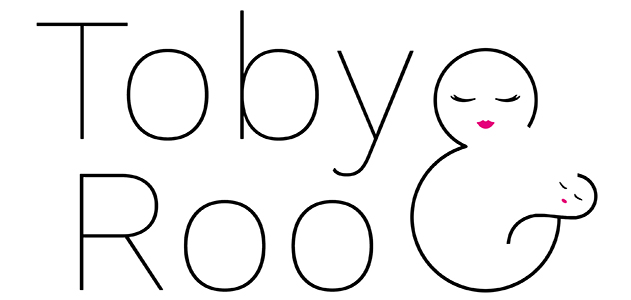Keeping a family organised can seem insurmountable, especially as parents juggle homework assignments, meal planning, and extracurricular activities. Yet, there’s a pathway to ease this chaos through digital solutions. By tapping into the power of technology, families can streamline their communication and foster a more efficient and harmonious home environment. Here’s how you can transform family life by embracing digital organisation.
Digital Tools for Homework Management
Managing homework digitally makes academic responsibilities more manageable and enhances children’s and parents’ learning engagement. Utilising cloud-based platforms allows access to assignments anytime and anywhere, ensuring everything remains organised in one central location. These tools, tailored for educational purposes, empower children to keep track of deadlines and submit their work seamlessly.
On the other hand, parents can utilise these platforms to monitor their children’s progress effectively. Parents can provide the necessary support at home by being aware of project requirements and timelines, creating a structured learning environment. This proactive involvement is key to boosting academic achievement and strengthening family bonds.
For those needing to edit and submit assignments digitally, online tools to edit PDFs offer intuitive editing and sharing features to keep everything in check, ensuring that both students and parents stay on top of educational commitments. Offering a user-friendly interface, these tools simplify the process of managing documents, making it easier for students to make revisions and submit polished work.
Meal Planning Made Simple
Organising meals can drastically reduce daily stress and contribute to meeting family nutritional needs. Digital meal-planning apps enable families to coordinate meals by offering curated recipes and generating shopping lists tailored to dietary preferences. This approach conserves time, curbs impulse buying, and encourages the exploration of new cuisines.
Linking these meal plans with digital calendars provides transparency, allowing all family members to see and engage with what’s on the menu. This coordination turns meal times into moments of joy and nutrition, fostering participation in meal preparation and encouraging meaningful interactions during meals. Families can expand their culinary horizons by trying new dishes and making dining experiences fun and educational.
Furthermore, meal planning helps accommodate everyone’s tastes while maintaining a budget. By having a clear plan, families can ensure that meals are balanced and aligned with health goals, creating a culinary experience everyone looks forward to. Effective meal planning tools also assist in reducing food waste by ensuring only necessary ingredients are purchased, contributing to more sustainable household practices.
Centralising Family Schedules
Centralising family schedules is a game changer when it comes to reducing confusion and enhancing coordination amongst numerous commitments such as school events, sporting activities, and social gatherings. Digital calendars are vital for managing appointments, offering a shared platform where the entire family can access up-to-date schedules.
Special features like reminders and notifications keep everyone aligned with family priorities, while colour-coding clearly represents individual commitments. This level of transparency promotes teamwork and facilitates effective communication within the household. Organising family activities in this manner prioritises family time, supporting a balanced and fulfilling lifestyle.
By utilising digital calendars, last-minute scheduling conflicts can be avoided, and everyone remains informed about important events. Parents can also teach children the importance of time management by involving them in scheduling, fostering responsibility and independence.
Moreover, families can create shared to-do lists, integrating tasks such as grocery shopping, household chores, or even planning family outings. Each member can contribute to the lists, promoting ownership and accountability.
Regular family meetings to review schedules and tasks can enhance communication, allowing everyone to express concerns or suggestions. This proactive approach leads to a more harmonious household, where conflicts are minimised, and family members feel more aligned with each other’s needs.
Financial Organisation with Digital Tools
Incorporating digital tools for managing household finances can yield substantial benefits. Budgeting apps provide real-time insights into spending patterns, enabling families to set financial objectives and precisely monitor expenses.
A clear view of family finances transforms money-related discussions from stressful encounters into constructive dialogues. By identifying savings opportunities, families manage daily expenses effectively while setting aside resources for future aspirations. Adopting this strategic approach to financial management cultivates peace of mind, freeing up mental space to focus on what truly matters.
Digital financial tools allow families to set collective goals, such as saving for holidays or educational expenses. Families can celebrate milestones by regularly reviewing financial progress together, reinforcing the value of teamwork and financial literacy. This collaborative effort can also instil positive financial habits in children, teaching them about budgeting, spending wisely, and saving.
Involving children in family financial discussions can demystify money management and help them understand the value of money. Creating a family savings jar, where everyone contributes towards a shared goal, can foster teamwork and accountability. Additionally, using budgeting tools that gamify saving can make the process more engaging for children, encouraging them to develop a responsible attitude towards finances.
Encouraging Family Collaboration
Digital organisation fosters collaboration among family members by utilising tools to delegate tasks and track progress on shared projects. This methodology encourages accountability and ensures contributions towards the household’s smooth functioning.
Assigning tasks based on individual strengths and interests creates a seamless and efficient household dynamic. By encouraging participation from everyone, you nurture unity and teamwork, enhancing relationships and ensuring that each family member feels valued and included in the family unit.
Engaging with these digital solutions can turn everyday chaos into a well-oiled machine. Embracing technology allows you to streamline communication, enrich family dynamics, and create a nurturing household where modern-day challenges are met easily and gracefully. Digital tools organise the physical elements of family life and cultivate an environment where collaboration and mutual support strengthen emotional and social bonds.
Implementing a family communication app can further enhance collaboration. These platforms allow families to share schedules, coordinate tasks, and communicate instantly, reducing misunderstandings and ensuring everyone remains connected.
Regular family check-ins, whether through shared digital platforms or face-to-face conversations, can reinforce bonds and create opportunities for discussion about achievements, challenges, and shared dreams. By integrating technology thoughtfully into family life, households can enjoy a more organised, harmonious, and fulfilling existence, where every member thrives.




